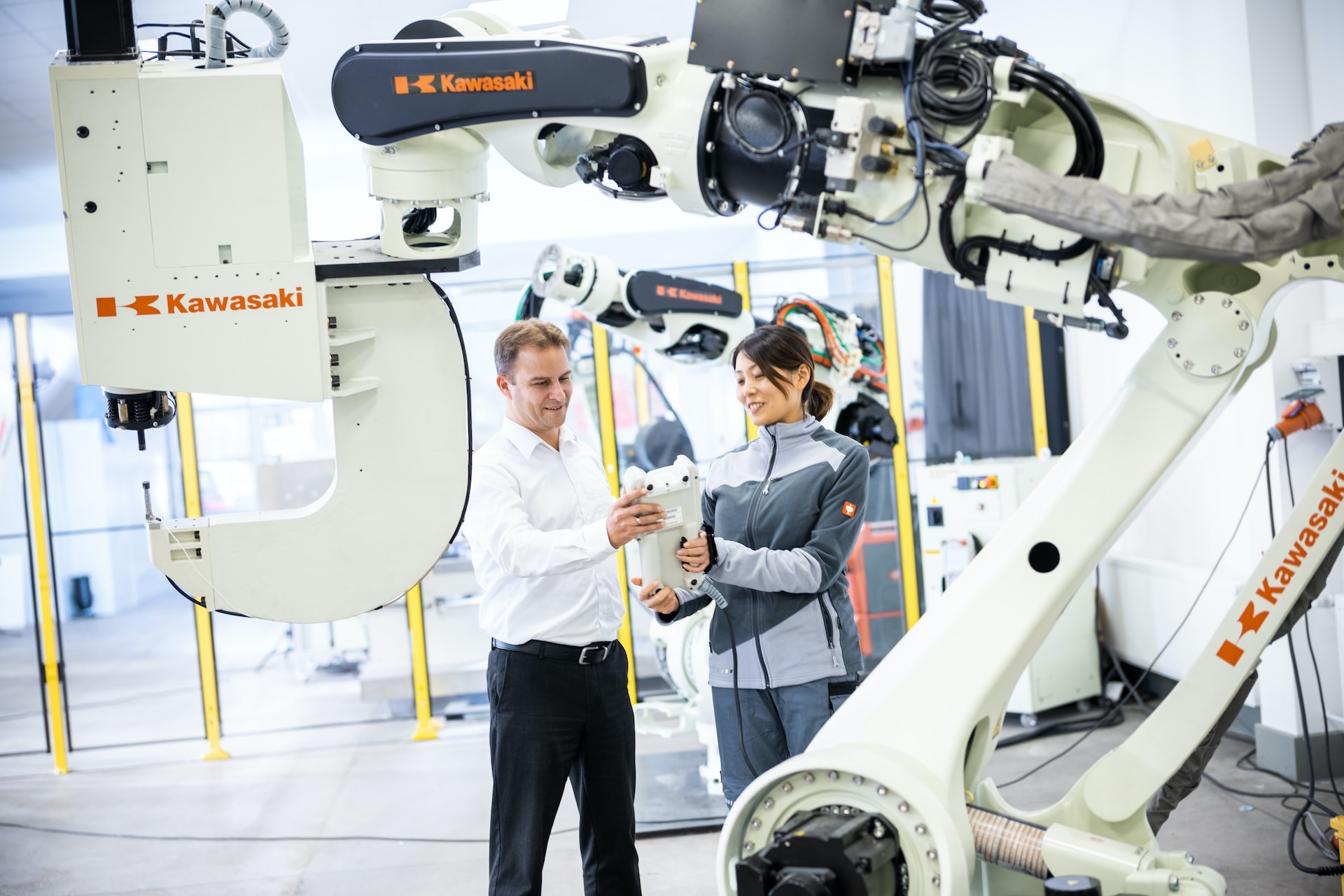
What is the Purpose of Digital Transformation: 6 Key Takeaways
February 20, 2023 - Emily Newton
Revolutionized is reader-supported. When you buy through links on our site, we may earn an affiliate commission. Learn more here.
The core purpose of digital transformation is improving efficiency to create the best customer experience possible. There is a lot of discussion about digital transformation today, but why should businesses pursue it? Are there other purposes for digital transformation beyond efficiency gains? Business leaders need to be aware of the technological advances in manufacturing if they want to keep pace with digital transformation.
What is Digital Transformation?
More and more businesses are implementing digital transformation today. This is a process of using advanced technology to improve conventional business processes, making them more efficient and streamlined. For instance, a manufacturing business might use advanced technology to digitize their accounting department by switching from paper bookkeeping to an accounting software program. Similarly, a logistics company could implement robotic process automation in their warehouses to increase productivity.
While digital transformation strategies vary from one business to another, they often follow a similar pattern. Business leaders start by identifying an area in their operations where there is a bottleneck or some type of inefficiency or challenge. Staffing shortages, process bottlenecks, security vulnerabilities, and outdated equipment or processes are all examples of common challenges digital transformation can resolve. For example, a manufacturing company might notice that materials are often being wasted in a certain step of production.
Resolving key challenges with new technologies is the first step to a widespread digital transformation. Once an initial challenge is identified, business leaders will analyze the issue to determine what digital tools could be applied to resolve it. They choose the solution that appears to be the best fit, test it, analyze the results, and either implement the digital solution permanently or try a different solution.
The Purpose of Digital Transformation: Top 6 Results
Digital transformation is about applying this technology-driven problem solving approach to a business’s entire operating strategy. Businesses that are running on legacy technology and paper processes can implement a digital transformation to gain the benefits of modern technology. What is the purpose of a digital transformation, though? What do businesses have to gain?
1. Improved Efficiency
The main purpose of digital transformation is improving efficiency. Gains in efficiency and productivity are among the most common benefits of applying modern technology to business challenges. This can take many different forms, such as more efficient resource utilization or more efficient processing times.
Efficiency is the main purpose of digital transformation because it is often the key to keeping up or getting ahead in today’s markets. This is why technological advances in manufacturing and logistics keep making waves. Automation improves factory production. The rise of e-commerce and Amazon’s rapid delivery services have changed customers’ expectations. Businesses need to have quick turnaround times and nimble processing to retain customers today.
Even comapnies that are not in retail-related industries can benefit from the efficiency gains of digital transformation. For example, a construction company could make their back office operations more efficient by replacing paper payroll and bookkeeping processes with an automated employee time tracking system and accounting software. Since these processes are more time efficient with the help of technology, employees can get more done in less time, reducing staffing needs.
2. Create Streamlined Employee Experience
Employees can benefit from digital transformation just as much as customers and end users do. The overall purpose of digital transformation is to use technology to help the business run as smoothly and efficiently as possible. Employees are a major part of that. When their jobs are well-optimized, employees are able to make the most out of their time on the job, resulting in higher productivity.
Digital transformation may be a challenge at first for employees, but it typically improves their work experience in the long run. For instance, a warehouse manager might deploy courier robots to reduce the amount of walking employees need to do on the warehouse floor. This improves workplace safety and reduces physical strain on employees. However, it may take some time for employees to get used to working with the new robots. Plus, someone will need to learn how to operate the robot management system.
Learning how to use new technologies comes with a learning curve for most employees, but it will be worth it. Employees are often unintentionally one of the causes of the inefficiencies that digital transformation can resolve. For example, a warehouse might not have enough employees to pick and pack items fast enough to keep up with incoming orders. A lack of adequate staff can lead to increased employee stress and physical strain. By adding robots to the warehouse, these challenges can be resolved, even if it might take some adjustment at first.
3. Reduced Resource Waste
If the purpose of digital transformation is to improve efficiency, the purpose of improving efficiency is reducing waste. Inefficient processes lead to lower productivity, wasted time, and wasted resources such as materials and electricity. Amidst supply chain shortages and delays, every resource becomes more valuable since replacing wasted resources is more expensive.
Digital transformation can optimize and streamline processes and improve visibility. For example, a manufacturer could use IoT devices and data analytics to track the amount of materials they are buying and the amount that ultimately gets used in finished products. AI algorithms can even be used to automate the data analysis process. This would reveal how much building material is going to waste in the production process and where they are being wasted most. Without technology, uncovering these insights would be difficult or near impossible.
In addition to spotting resource waste, digital transformation can also help businesses reduce waste. For example, using AI-powered cameras for quality control not only makes QC more efficient but it can also make it more effective. A camera scans each unit and an AI algorithm rapidly processes the images. If it identifies signs of a defective unit, it flags the unit for human review. Since AI-powered QC is quick and accurate, more QC checkpoints can be placed throughout the production process. When mistakes are spotted earlier, more units may be able to be repaired and completed instead of going to waste.
4. Reduce Wasted Time
Similarly, robotics can automate difficult, dangerous or tedious tasks in the workplace where errors are most prevalent. For instance, maybe a certain back-office task requires simply entering numbers into a spreadsheet and doing some calculations with them. That might be easy, but it is highly time consuming and not engaging for employees. When employees are disinterested, they are more likely to make mistakes. Applying a digital solution to automate this type of task reduces wasted time, increasing the value of employees’ hours on the job.
5. Competitive Advantage
While market competition may not be the primary purpose of digital transformation, it can be a strong motivator for innovating business processes. Businesses that are up-to-date on innovations in their industry will have the best chance of staying ahead of the competition. By adopting modern technologies, businesses can deliver the best experience for their customers possible. Those who pursue digital transformation soonest will have the best chance of gaining an edge over their competitors.
A perfect example of this is the way that Amazon became the top e-commerce company in the United States. It started as an online marketplace for selling books, but even that was revolutionary in 1994 when Jeff Bezos founded the company. E-commerce was still a new breakthrough in retail. By choosing to take the leap to selling books online, Bezos was able to pioneer the use of a new technology, the Internet, long before his competitors, conventional book sellers.
By the time other companies began selling books and other products online, Bezos already knew all the tools and tricks of the trade. As a result, he was able to offer his customers features and services on Amazon that his competitors couldn’t keep up with. Pursuing digital transformation can be slow and challenging at first, but it can have a monumental impact in the long run. This doesn’t have to mean creating an entirely new market, either. Amazon also pioneered the use of robotics and automation in warehouses, unlocking their famous 2-day shipping.
6. Improved Customer Experience
Finally, the core purpose of digital transformation is improving the customer experience. All of the other goals and results of adopting new technologies in the workplace are part of the central goal to give customers the best service possible. End users may not see the new robots in a manufacturing facility or the new warehouse management software but they will feel the positive impact of those technologies through better products or faster shipping times.
The primary goal of any business is to meet the needs of a key group of customers and deliver a product or service that in some way improves their lives. Digital transformation can help businesses grow and adapt to the digital age and innovate the way they achieve that primary goal. As customers’ expectations change, businesses need to adapt in order to continue providing the best products and services possible.
Evolving Through Digital Transformation
The purpose of digital transformation is much more than keeping up with industry tech trends. Adopting digital solutions and new technologies in the workplace can give businesses an invaluable competitive edge. Technology can lead to gains in efficiency and productivity, improve employee safety and satisfaction, reduce waste and improve the customer experience. Pursuing digital transformation is the key to evolving business operations to meet the challenges of today and the future.
Revolutionized is reader-supported. When you buy through links on our site, we may earn an affiliate commission. Learn more here.
Author
Emily Newton
Emily Newton is a technology and industrial journalist and the Editor in Chief of Revolutionized. She manages the sites publishing schedule, SEO optimization and content strategy. Emily enjoys writing and researching articles about how technology is changing every industry. When she isn't working, Emily enjoys playing video games or curling up with a good book.







